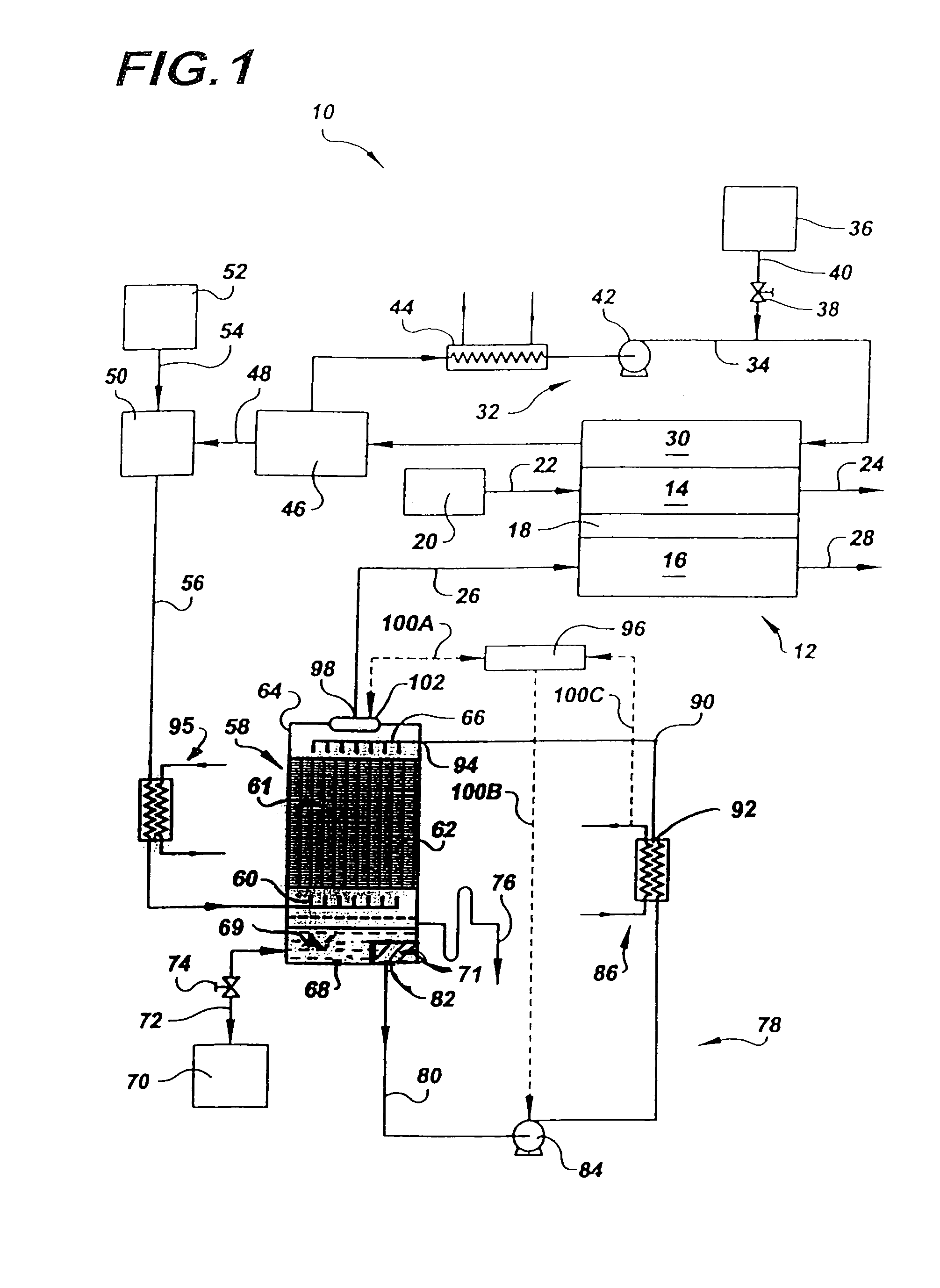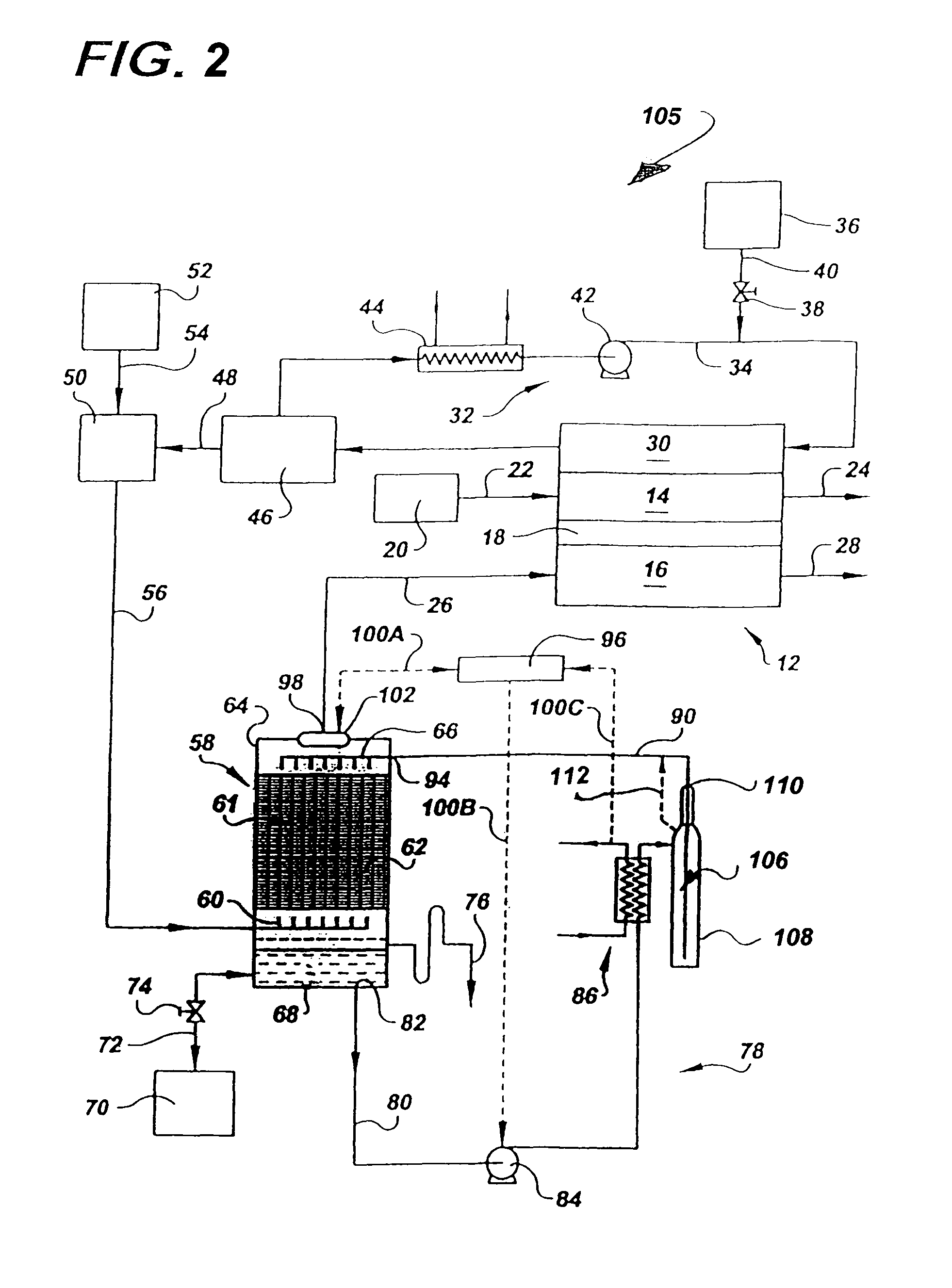Integrated contaminant separator and water-control loop for a fuel reactant stream
a technology of contaminant separator and fuel reactant stream, which is applied in the field of fuel cells, can solve the problems of fuel cells that include phosphoric acid as an electrolyte cannot achieve the desired 10 year life, and ammonia in the reformate fuel stream is detrimental to the performance of the fuel cell,
- Summary
- Abstract
- Description
- Claims
- Application Information
AI Technical Summary
Benefits of technology
Problems solved by technology
Method used
Image
Examples
Embodiment Construction
[0017]Referring to the drawings in detail, an integrated contaminant separator and water-control loop for a fuel reactant stream of a fuel cell is shown in FIG. 1 and is generally designated by the reference numeral 10. A fuel cell 12 appropriate for the present disclosure includes a cathode flow field 14 and an anode flow field 16 secured to apposed sides of an electrolyte 18. The electrolyte 18 may be a phosphoric acid electrolyte, a proton exchange membrane (“PEM”) electrolyte, or any electrolyte known in the art. An oxygen supply 20 delivers an oxygen containing reactant stream through an oxidant inlet 22 into and through the cathode flow field 14, and the oxygen reactant stream leaves the fuel cell 12 through a cathode vent 24. A hydrogen containing reducing fluid fuel is directed to flow through a fuel reactant inlet line 26 through the anode flow field 16 and out of the fuel cell 12 through anode vent 28.
[0018]The fuel cell 12 may also include a coolant plate 30 that has a wa...
PUM
| Property | Measurement | Unit |
|---|---|---|
| temperature | aaaaa | aaaaa |
| solubility | aaaaa | aaaaa |
| time intervals | aaaaa | aaaaa |
Abstract
Description
Claims
Application Information
 Login to View More
Login to View More - R&D
- Intellectual Property
- Life Sciences
- Materials
- Tech Scout
- Unparalleled Data Quality
- Higher Quality Content
- 60% Fewer Hallucinations
Browse by: Latest US Patents, China's latest patents, Technical Efficacy Thesaurus, Application Domain, Technology Topic, Popular Technical Reports.
© 2025 PatSnap. All rights reserved.Legal|Privacy policy|Modern Slavery Act Transparency Statement|Sitemap|About US| Contact US: help@patsnap.com



